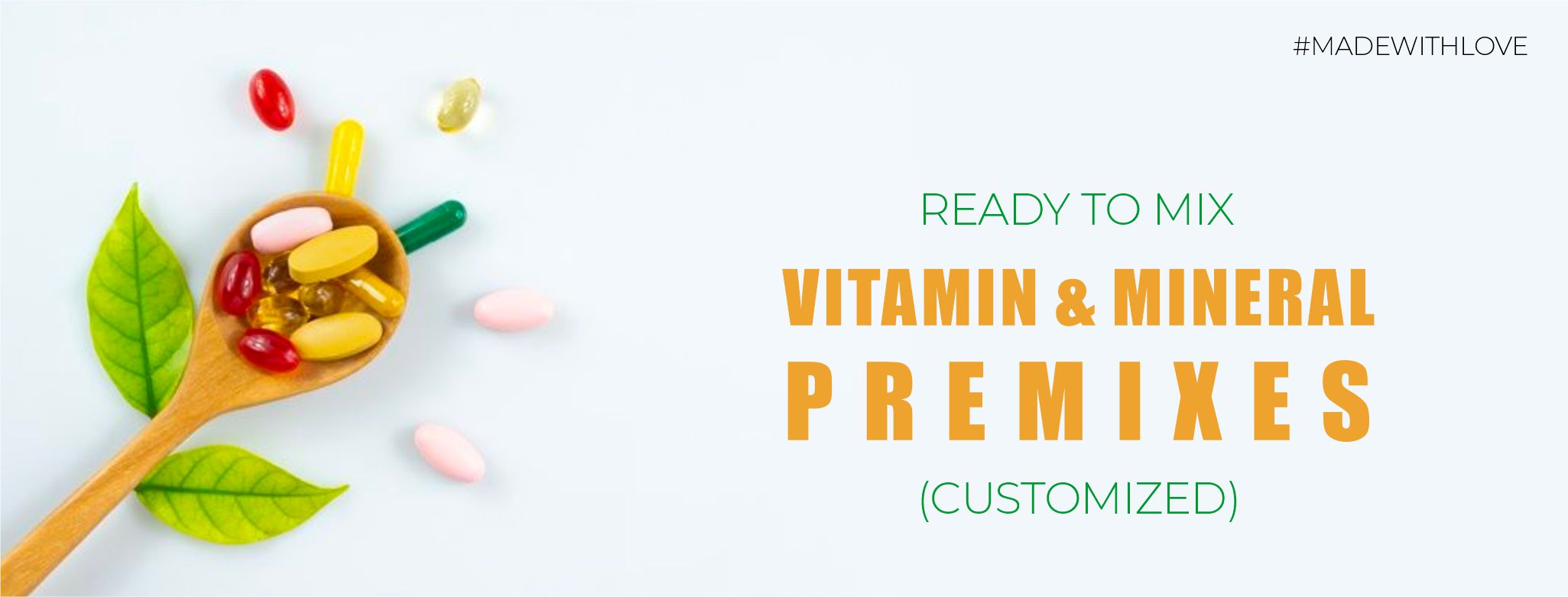Nutrient Premix Literature
Nutrient premix is a blend of essential vitamins and sometimes minerals that are combined in specific proportions to be added to foods, beverages, or animal feed. It ensures that the final product meets nutritional requirements or provides health benefits. Nutrient premixes are widely used in industries such as:
Food and Beverage: Fortifying productslike cereals, dairy, baked goods, and beverages with vitamins to enhancetheir nutritional value.
Animal Feed: Providing balancednutrition for livestock, poultry, and pets to support growth, health, andproductivity.
Dietary Supplements: Used in theproduction of multivitamins or other nutritional supplements.
Key Components of a Nutrient Premix:
Vitamins: Commonly includedvitamins are A, D, E, K, C, and B-complex vitamins (e.g., B1, B2, B3, B6,B12, folic acid, biotin).
Minerals: Sometimes added,such as calcium, iron, zinc, or selenium.
Carriers/Excipients: Ingredients likemaltodextrin or starch are used to stabilize the mix and ensure evendistribution.
Benefits of Using Nutrient Premixes:
Precision: Ensures accuratedosing of vitamins.
Convenience: Simplifies thefortification process.
Stability: Protects sensitivevitamins from degradation.
Compliance: Helps meetregulatory standards for nutrient content.
Applications:
Human Nutrition: Used in fortifiedfoods, infant formula, and supplements.
Animal Nutrition: Added to feed forlivestock, poultry, aquaculture, and pets.
Medical Nutrition: Used in therapeuticor clinical nutrition products.
If you're working with nutrient premixes, it's important to consider factors like stability, compatibility with other ingredients, and regulatory requirements for your specific application. Let me know if you'd like more details!


